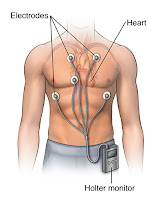This is Sooty, the first of five cats I’ve shared a home with. He wasn’t black all over but we called him Sooty anyway because it was a good name for a cat.
He came as a six-week old kitten from a friend’s cat’s litter when I was nine or ten. Oblivious of the omnipotent choice I was making, I picked the one I wanted when they were just a few days old and never thought to ask what became of the others. On the day he came to us, he lay on the carpet in a patch of sun as I built around him with my toy wooden bricks, buzzing in a peculiar way.
He would lie on the hearth rug stretched out by the fire, or sit in the garden with his fur puffed out looking cute. He would go to sleep in the best chair, paws trembling as he dreamed, furry radar ears tracking every sound. When it suited him, he would jump up to your knee, turn round a few times paws kneading, and settle down, soft and warm, fur moving to the rhythm of his breathing.
But in a house with two boys he was teased a lot. Worse, I saw the lad who sometimes stayed next door swing him by his tail. He quickly learned to stand up for himself and could be vicious. He was fearless. He would run up behind, encircle your ankle with his front legs, sink in claws and teeth, and scuff vigorously with his hind claws as if trying to disembowel you. It could be nasty if he got your arm and brutal if you tried to pull away. His tail would be going like a windscreen wiper. My arms and legs were usually scarred in weals and scratches.
Later, we moved. He ran back and forth between the front and back windows of the new house, disorientated, looking out and miaowing pathetically. When he eventually settled he spent hours stalking in the long grass in a field at the back.
We built a house of cards and rolled chocolate Maltesers underneath so he would chase them and put his head through the cards. It took rather a lot of sweets to get the right shot. “Cat crunching up chocolate covered malted milk ball” might have made a good picture too. “Cat being sick”, maybe not.
I know now that chocolate is toxic to cats but, according to the next-door neighbour, he sneaked upstairs in her house, ate some of her chocolates, and hid the paper wrappers under her bed. Another day, he came home covered in tar which had to be cleaned off with petrol. On another occasion, he swallowed around eighteen inches (45cm) of string which came back out of his throat like one of those animal-shaped retractable tape measures with tape that pulls out of its mouth.
How many lives do cats have? I still wonder whether that ‘string’ led to his final undoing. Rather than string, it was actually quarter-inch wide (0.5 cm) paper ribbon, used to tie up brown paper parcels, with the name of the shop repeated along its length. I haven’t seen any like it for years. He might have mistaken it for grass. It also had a slightly fishy smell. The edges were sharp enough to give you a paper cut. Did it damage his mouth?
Two or three years later, after I left home, my mother, who, of course, always looked after his food and litter tray, thought he was finding it difficult to eat because of something stuck in his throat. He had lost weight. One bank-holiday Tuesday, I drove them to the vet. Sooty was kept in for further investigations and I returned to work in Leeds. Not being in constant communication as we are now, I did not hear what happened until Friday. He had a large tumour at the back of his tongue and the vet advised putting him to sleep. He was ten and a half years old.







